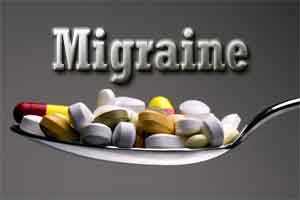- Home
- Editorial
- News
- Practice Guidelines
- Anesthesiology Guidelines
- Cancer Guidelines
- Cardiac Sciences Guidelines
- Critical Care Guidelines
- Dentistry Guidelines
- Dermatology Guidelines
- Diabetes and Endo Guidelines
- Diagnostics Guidelines
- ENT Guidelines
- Featured Practice Guidelines
- Gastroenterology Guidelines
- Geriatrics Guidelines
- Medicine Guidelines
- Nephrology Guidelines
- Neurosciences Guidelines
- Obs and Gynae Guidelines
- Ophthalmology Guidelines
- Orthopaedics Guidelines
- Paediatrics Guidelines
- Psychiatry Guidelines
- Pulmonology Guidelines
- Radiology Guidelines
- Surgery Guidelines
- Urology Guidelines
Migraine Headache Guidelines: US Headache Consortium, American Headache Society

The American Academy of Neurology and the American Headache Society collaboratively released guidelines on the pharmacologic treatment for episodic migraine prevention in adults.
Migraine is a common, disabling, and costly disorder. There is no cure, but preventive treatment to decrease the number and severity of headache attacks improves health outcomes and quality of life.3 It also reduces disability and costs.
The initial selection of agents should be based on the level of established efficacy. Routinely evaluate patient response and utilize factors such as comorbidities, personal considerations, and adverse reactions to guide and individualize therapy. Comparisons of efficacy amongst agents of the same drug class for short-term as well as chronic use have not been established by the evidence currently available.
Read Also: Women suffering from migraine have lower diabetes risk : JAMA
Frequent or high dosing of these medications can lead to rebound headaches and progression to chronic headache disorders. Initiate at the lowest possible dose then increase to desired effect or development of an adverse reaction. An adequate trial length is between 2−6months. Discontinuation via a taper is encouraged if a patient is well-controlled after 6−12months of therapy.
According to the guidelines, the following medications are established as effective and should be offered for migraine prevention (level A recommendation):
- Antiepileptic drugs (AEDs): divalproex sodium, sodium valproate, topiramate
- β-Blockers: metoprolol, propranolol, timolol
- Triptans: frovatriptan for short-term MAMs prevention
The following medications are probably effective and should be considered for migraine prevention (level B recommendation):
- Antidepressants: amitriptyline, venlafaxine
- β-Blockers: atenolol, nadolol
- Triptans: naratriptan, zolmitriptan for short-term MAMs prevention
The following medications are possibly effective and may be considered for migraine prevention (level C recommendation):
- ACE inhibitors: lisinopril
- Angiotensin receptor blockers: candesartan
- α-Agonists: clonidine, guanfacine
- AEDs: carbamazepine
- β-Blockers: nebivolol, pindolol
NSAIDs and other complementary treatments for episodic migraine prevention in adults
The American Academy of Neurology and the American Headache Society also released guidelines regarding the use of NSAIDs and complementary treatments in preventing episodic migraine.
Read Also: Migraine with visual aura increases risk for irregular heartbeat
The following therapy is established as effective and should be offered for migraine prevention (level A recommendation):
- Petasites (butterbur)
The following therapies are probably effective and should be considered for migraine prevention (level B recommendation):
- NSAIDS: fenoprofen, ibuprofen, ketoprofen, naproxen, naproxen sodium
- Herbal therapies, vitamins, and minerals: riboflavin, magnesium, MIG-99 (feverfew)
- Histamines: histamine SC
The following therapies are possibly effective and may be considered for migraine prevention (level C recommendation):
- NSAIDs: flurbiprofen, mefenamic acid
- Herbal therapies, vitamins, and minerals: Co-Q10, estrogen
- Antihistamines: cyproheptadine

Disclaimer: This site is primarily intended for healthcare professionals. Any content/information on this website does not replace the advice of medical and/or health professionals and should not be construed as medical/diagnostic advice/endorsement or prescription. Use of this site is subject to our terms of use, privacy policy, advertisement policy. © 2020 Minerva Medical Treatment Pvt Ltd